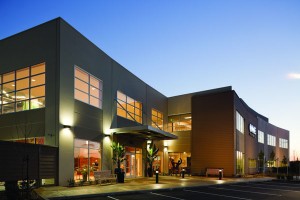The club image of 20 or 30 years ago has left the gym! Now, clubs design for a sleek modern style with a touch of sophistication. Many successful club owners have embraced design and have made it a major factor in planning their businesses. “Clubs must always consider that simply providing a ‘big box’ with a bunch of equipment is no longer sufficient in competitive marketplaces,” said Michael Olander, president of North Carolina-based O2 Fitness. “The consumer has come to expect new and exciting ideas, and it is up to us to provide them.”
Conquering the Start-up
Owners of all types of clubs run into hurdles when developing a new facility. Searching for the best solutions to get your club up and running can be the difference between a solid, well thought-out project and an incomplete, poorly planned fitness center.
Before Jill Stevens Kinney, founder of the California-based Club One Fitness chain and managing director of Clubsource Development Partners, started designing her 102nd club in Petaluma, Calif., she spent years researching location demographics. Her team then followed up with an additional year of focusing strictly on design development. “We have architects that have worked with us for years,” Kinney explained. “We provide them with a great deal of detail and give them a design ‘tool book’ so they start with a lot of information. It’s important to have creative and detailed architects. The architect brings thatartist’s design and sizzle.”
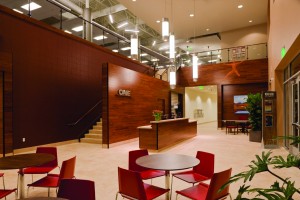
Bryan Dunkelberger, a principal with S3 Designs, said the average time for designing a club (depending on location and size) is between three and six months, and construction alone can last from 16 to 25 weeks. Experts agreed that when developing a new club, owners should try to prepare a launch date around the beginning of January or September. Amy Passen, owner of Canton Club Health and Fitness in Baltimore, Md., discussed the return to school as a great motivator. “We happen to be near Johns Hopkins University, so in September there is a whole new crew of residents and interns moving to our area,” Passen said. “September, by no means, is anything like the first of the year, but it’s typically a good month for us in membership and personal training.” Dunkelberger agreed, “If you can’t open near New Years, you really should be shooting for September. Club activity typically drops off during the summer months, and trying to capture new members in the fall is usually more successful. The summer slowdown, however, is a great time to schedule renovations.”
Even in the newest clubs, renovations often persist following construction. For example, when Kinney’s most recent Club One in Petaluma, Calif. opened, there was a predicament with member traffic. “You try to plan for everything, but you’ll usually see something you need to fix,” she said. “We developed the women’s workout area near one of the entrances and members used that entrance more. We had to make some changes to reroute the traffic flow.” Despite adjustments, preparation has been key for Kinney, who said most of her clubs wouldn’t have had such great success if it weren’t for intense planning.
Passen opened her club in an already existing location overlooking the waterfront in Baltimore. Although, a great looking space, her team ran into challenging situations both during and following development. “There were times that I wished we had built on a new site,” she said. “In order to save money we built around existing plumbing, but in the first few months after opening, our showers leaked into the restaurant below us and had to be fixed immediately.”
The site could make all the difference in the world for a new club, explained Hervey Lavoie, president of Ohlson Lavoie Collaborative. “The best club sites have attractive outdoor surroundings that can be exploited for indoor views to the outside,” he said. “There is no doubt that a club interior that is flooded with daylight and favorable outdoor views will outperform a windowless box.”
Budget Your Money
Budgeting has been the biggest issue for owners who are attempting to renovate or construct new clubs. “People often set budgets randomly and either don’t finish or go over,” Kinney explained. “Planning is the most important aspect in designing clubs. During the last eight years, we were either on or under our budget thanks to long periods of planning.”
Getting more ‘bang for your buck’ has long been a conundrum among club owners. “You have to evaluate the club in its entirety and make the best decision with the funds you have,” explained Rudy Fabiano, president of Fabiano Designs. “The best decision might be to add more services and programs, or lighting might do the trick. Each club has a unique style you have to exploit and evaluate.” Alex Reed, marketing analyst from Big Ass Fans, suggested that club owners incorporate energy saving designs like fans and natural light to stretch their budgets. Natural light can cut down on energy usage, while fans can allow clubs to save money by lowering heating and cooling costs. “Focus on keeping the club clean,” said Eric Washington, the president and CEO of 24 Seven Family Fitness & Tanning Centers. “Touch up paint in high traffic areas, steam clean carpets and replace cracked/torn upholstry. These are things members really notice.”
A slick-looking club can be developed without throwing major dollars into renovations. “Hire the best designer you can,” Fabiano encouraged. “They’ll stretch your dollar more than anything.” According to Reed, owners should search for assets that have quick paybacks. By reducing energy consumption while keeping the atmosphere comfortable, owners could save money and keep members happy.
Washington suggested to use the money you have more wisely. “If you have been struggling with spinning or aerobic classes, open the space up and add some more cardio equipment,” he suggested. “Maxamize your workout floor and add some more circuit equipment to compete with your competition.”
Technology: A Fine Line, but Someone Has to Cross It
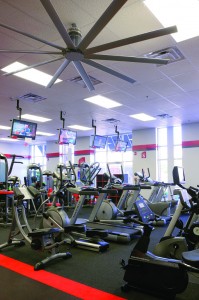
Dunkelberger explained that flat screen TVs have become a ‘staple’ in club design. “They are much more cost effective now and they aren’t as bulky, which means they can be incorporated into a space much more easily,” he said. However, it’s also important to make sure that new technologies will not isolate members too much. “We recently went through discussions with one of our clients about a virtual yoga studio where large television screens made up the head wall.” Essentially, members could select their favorite digital yogi and take a class on a remote beach. Regardless of its progressive nature, Dunkelberger said the technology wasn’t effective in this particular case because it took away the emotional connection between members and the instructor – an intimacy the club and its members didn’t want to lose just for the sake of offering new technology.
Lavoie believes the best new technologies in clubs will be built around wireless capabilities. “Flexibility is the name of the game as clubs discover their survival is linked to their ability to adapt in changing markets,” he said. “Members are increasingly expected to bring their own technology in the form of iPhones, games and music players.”
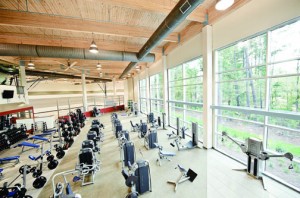
‘Cardio theaters,’ where members can watch full-length movies while exercising, continue to be popular and have been appearing in clubs for years now. “In addition, we like to have our cardio in four other places,” Olander said. “Some members prefer a bird’s eye view of the lobby and floor, some like to look at the wall of TVs, while others prefer personal entertainment screens.”
Designing the perfect club can resemble putting together a puzzle. Each piece, although necessary to get the full image, has to be tactfully placed in just the right location. Designers and owners often want to use technology to modernizeclubs, but many owners believe there is a fine line between too much and not enough. The major concern has been built around alienating members; if members are discouraged from exercising because the technology is too complicated, you’ve gone to far. To get the amount of technology right, slowly bring new items into your club, but focus on keeping some of the older pieces in place as well to avoid alienating longtime members.
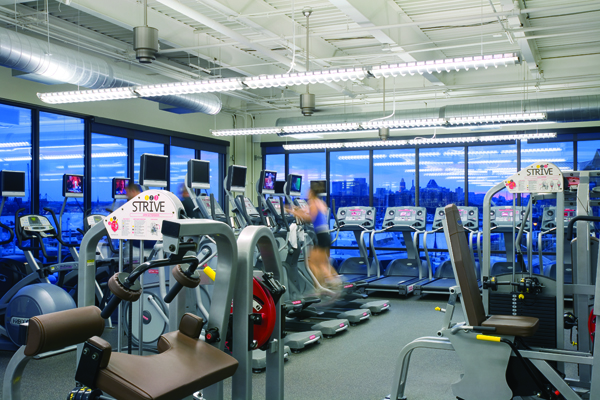
A Different Look
Using new and innovative designs around your gym can upgrade your image and save energy costs in the long run. For years, Kinney has used different types of lighting concepts to make members look and feel good while exercising in workout attire. “I had one women say she looked better in our locker room than she did at home,” Kinney said. “I told her to get rose tinted lights for her bathroom like we have in the locker rooms.” Passen has enjoyed using her club’s massive windows to let in natural light. She keeps a lot of the indoor lights on a switch panel near the lobby where she can turn them off on bright, sunny days.
Not only do fans keep energy costs down, but they also give your club a different look. Reed explained that fans used to be difficult to install and didn’t have the club image in mind, but today cycling, group exercise and cardio areas – traditionally cramped spaces – can incorporate large, slick fans without making the room feel uncomfortable. “Members can control the speed of the fans, thus controlling the comfort level in the club,” Reed said.
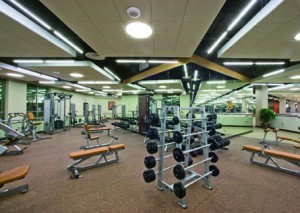
Planning is key to avoiding problems with club design. Take your time and determine a sensible route to the finish line. Remember, if you rush through your plan, design or construction, you’ll end up with a hastily built health club and could wind up facing unnecessary challenges as a result. -CS
The Lowdown On Lighting
Whether it’s indoor or outdoor lighting, here are some tips from the experts:
“Try to respect the activity that is being done in each space. For example, when members are spending a lot of time on their backs, don’t use direct light fixtures overhead. If you want to showcase a certain element, simply hit it with a few spotlights.” – Bryan Dunkelberger, a principal with S3 Designs.
“We are looking into LED Lighting. LED lights can present certain advantages, including lower energy consumption, longer life, improved robustness, smaller size and faster switching.” – Michael Olander, president of North Carolina-based O2 Fitness.
“We use several different types of lighting over the front desk. We have hanging fixtures that tie into our waterfront setting and use fluorescent lighting in various spaces around the club, such as behind the edges of walls, leading down a corridor or on top of the lockers – this gives a nice glow. We have a blue film over the fluorescent lights in our cycling studio, which gives a great appearance, especially at night.” – Amy Passen, owner of Canton Club Health and Fitness in Baltimore, Md.
“Natural light, natural light, natural light. For the money, and some glare, it’s the best feature a club can have.” – Rudy Fabiano, president of Fabiano Designs.
“Lighting in a club can change the mood. It can make members look better and that’s key!” – Jill Stevens Kinney, founder of Club One.
“When generous spaces are enriched with daylight and exterior views, coordinated color schemes and open design, the benefits start to multiply and contribute to business success.” – Hervey Lavoie, president of Ohlson Lavoie Collaborative.


